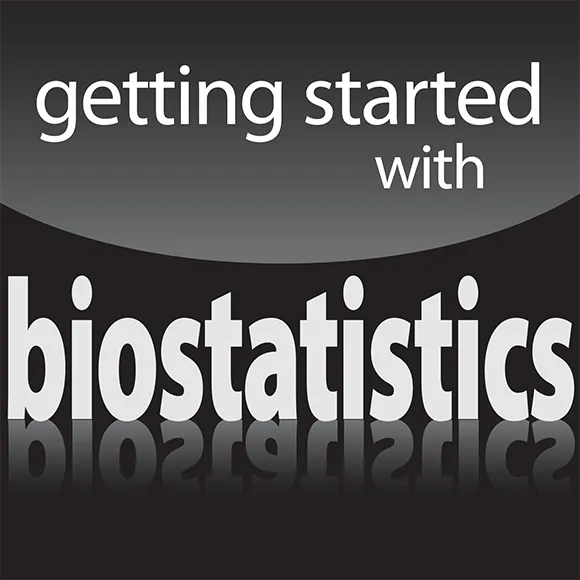Part I
Beginning with Biostatistics Basics
Visit
www.dummies.com for great (and free!) Dummies content online.
In this part . . .
Get comfortable with mathematical notation that uses numbers, special constants, variables, and mathematical symbols — a must for all you mathophobes.
Review basic statistical concepts — such as probability, randomness, populations, samples, statistical inference, and more — to get ready for the study of biostatistics.
Choose and acquire statistical software (both commercial and free), and discover other ways to do statistical calculations, such as calculators, mobile devices, and web-based programs.
Understand clinical research — how biostatistics influences the design and execution of clinical trials and how treatments are developed and approved.
Chapter 1
Biostatistics 101
In This Chapter
Getting up to speed on the prerequisites for biostatistics
Understanding the clinical research environment
Surveying the special procedures used to analyze biological data
Estimating how many subjects you need
Working with distributions
Biostatistics deals with the design and execution of scientific experiments on living creatures, the acquisition and analysis of data from those experiments, and the interpretation and presentation of the results of those analyses.
This book is meant to be a useful and easy-to-understand companion to the more formal textbooks used in graduate-level biostatistics courses. Because most of these courses concentrate on the more clinical areas of biostatistics, this book focuses on that area as well. In this chapter, I introduce you to the fundamentals of biostatistics.
Brushing Up on Math and Stats Basics
Chapters 2 and 3 are designed to bring you up to speed on the basic math and statistical background that’s needed to understand biostatistics and to give you some supplementary information (or “context”) that you may find generally useful while you’re reading the rest of this book.
Many people feel unsure of themselves when it comes to understanding mathematical formulas and equations. Although this book contains fewer formulas than many other statistics books do, I do use them when they help illustrate a concept or describe a calculation that’s simple enough to do by hand. But if you’re a real mathophobe, you probably dread looking at
any chapter that has a math expression anywhere in it. That’s why I include
Chapter 2 — to show you how to read and understand the basic mathematical notation that I use in this book. I cover everything from basic mathematical operations to functions and beyond.
If you’re in a graduate-level biostatistics course, you’ve probably already taken one or two introductory statistics courses. But that may have been a while ago, and you may not feel too sure of your knowledge of the basic statistical concepts. Or you may have little or no formal statistical training, but now find yourself in a work situation where you interact with clinical researchers, participate in the design of research projects, or work with the results from biological research. If so, then you definitely want to read
Chapter 3, which provides an overview of the fundamental concepts and terminology of statistics. There, you get the scoop on topics such as probability, randomness, populations, samples, statistical inference, accuracy, precision, hypothesis testing, nonparametric statistics, and simulation techniques.
Doing Calculations with the Greatest of Ease
This book generally doesn’t have step-by-step instructions for performing statistical tests and analyses by hand. That’s because in the 21st century you shouldn’t be doing those calculations by hand; there are lots of ways to get a computer to do them for you. So this book describes calculations only to illustrate the concepts that are involved in the procedure, or when the calculations are simple enough that it’s feasible to do them by hand (or even in your head!).
Unlike some statistics books that assume that you’re using a specific software package (like SPSS, SAS, Minitab, and so on), this book makes no such assumption. You may be a student at a school that provides a commercial package at an attractive price or requires that you use a specific product (regardless of the price). Or you may be on your own, with limited financial resources, and the big programs may be out of your reach. Fortunately, you have several options. You can download some excellent free programs from the Internet. And you can also find a lot of web pages that perform specific statistical tests and procedures; collectively they can be thought of as the equivalence of a free online statistical software package. Chapter 4 describes some of these options — commercial products, free programs, web-based calculators, and others.
Concentrating on Clinical Research
This book covers topics that are applicable to all areas of biostatistics, concentrating on methods that are especially relevant to
clinical research — studies involving people. If you’re going to do research on human subjects, you’ll want to check out two chapters that deal with clinical trials (and specifically drug development trials). These studies are among the most rigorously designed, closely regulated, expensive, and consequential of all types of scientific research — a mistake here can have disastrous human and financial consequences. So even if you don’t expect to ever take part in drug development research, clinical trials (and the statisti...

















